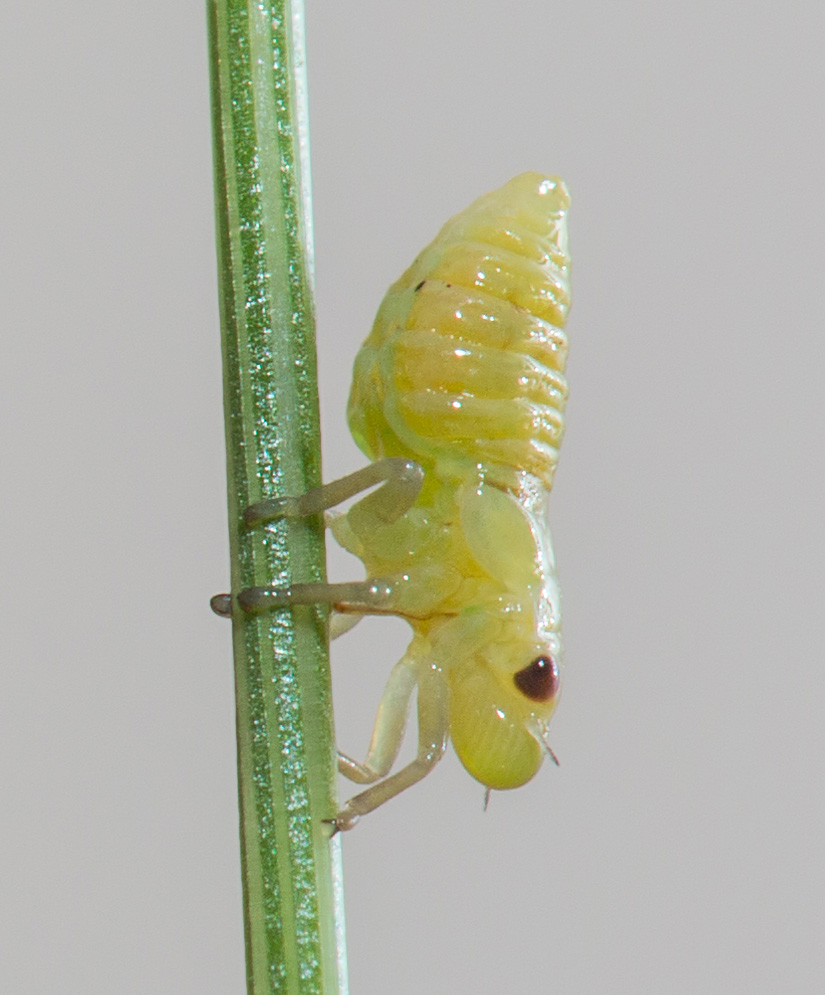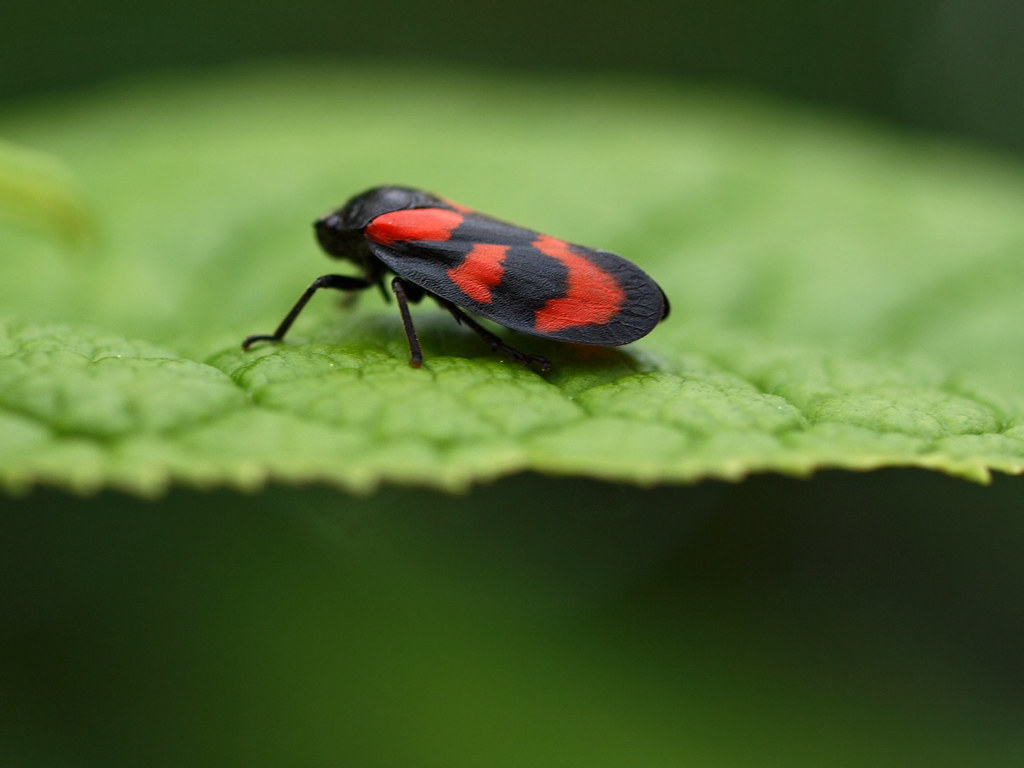Almanac: House Of Spit

Spittlebug nymph in action. Photo: Katja Schultz. Wikimedia Commons
I’ve lived in the valley 21 years now and have avidly explored its trails, hills, and waterways. Nonetheless, I’m still discovering new trails and new areas, which is always delightful. Last week, for example, I had some time to kill in Montague and wandered down North Street, where I discovered a network of trails leading through lovely meadows along the Sawmill River. Some veerys were singing their flute-like descending spirals and wildflowers of all sorts were blooming in the fragrant morning air.
I walked past a patch of young goldenrod plants, still months away from blooming, and noticed that many had blobs of what looked like foamy spit adhering to their stems or at junctions between stem and leaves.

If you gently wipe some of the foam away with a small twig or your finger, you’ll find its maker: a glistening yellow-and-green nymph about the size of a rice grain. These nymphs are called, appropriately enough, spittle bugs (or, locally, spit bugs) and both they and the adults they turn into are amazing little creatures. (The foam itself goes by such colorful names as cuckoo spit, snake spit, or frog spit.)

First a quick detour about the word “bug.” In last week’s column I said that lightning bugs are not true bugs, they’re beetles. True, but that begged the question (which I failed to answer) of what a danged bug actually is. So here you go: true bugs are insects of the hemiptera order that are equipped with piercing/sucking mouthparts allowing them to extract the juice of a plant or animal. Roughly 80,000 species of true bugs exist and the order includes cicadas, aphids, and bed bugs. It does not include lady bugs, which, like lightening “bugs” are actually beetles.
OK, back to the curious case of the spittle bug. These critters have the unusual trait of feeding on the very dilute sap contained in the upward-coursing xylem of a plant, rather than the typically sweet, nutrient-rich sap in the phloem, which descends from the leaves where sugar is made. To extract energy from this thin gruel means a spittle bug must suck up and filter an enormous amount of sap. Each spittlebug daily drinks roughly 150-280 times its own body weight in sap. For a 150-pound human, that would be equivalent to drinking about fifty-four 50-gallon drums of water every day.
Drinking so much means the spittle bug is constantly peeing. The urine contains some sticky fluid and some nasty-tasting compounds, which produces a frothy, multi-purpose home that conceals the nymph, insulates it from temperature extremes, and keeps it moist. The only challenge is breathing under the suds. Nymphs take in air through holes in their abdomens, so every minute or so they stick the tip of their abdomen, snorkel-like, out of the foam to catch a breath, then they quickly retreat.
After a month or so, the spittlebugs create a single large cocoon-like bubble and metamorphosize into adults, which are called froghoppers because of their astounding leaping abilities. The rear pair of froghopper legs are hyper-developed, somewhat like the rear legs of a kangaroo. These super-strong legs actually make it hard for the insect to walk—the bug sort of drags the rear legs behind—but if the bug wants to leap, these legs compress and then snap open so rapidly they hurl the bug up to 70 centimeters vertically. That’s a more impressive performance than the leaps that fleas are renowned for because frog hoppers are about 60 times heavier than fleas. Froghoppers accelerate at roughly 4,000 meters per second per second, which induces an incredible 400 gravities (Gs) of acceleration. For comparison, an astronaut blasted into space experiences about 5 Gs during ascent.

Spittlebugs are not terribly picky about their diet…any plant suitably tender and juicy will do. A heavy infestation could harm a plant, although one or two are unlikely to do so. If you happen to find a population on a favorite garden plant, you can easily get rid of them (at least temporarily) by hosing the plant down with a strong jet of water. But if you have only a few, consider observing over the course of a few weeks as the nymph matures into an adult. Maybe you’ll get to witness an adult display its superpower, which is one of the more impressive feats of insect locomotion in the natural world.
Almanac is a regular Indy column of observations, musings, and occasional harangues related to the woods, waters, mountains, and skies of the Pioneer Valley. Please feel free to comment on posts and add your own experiences or observations.
